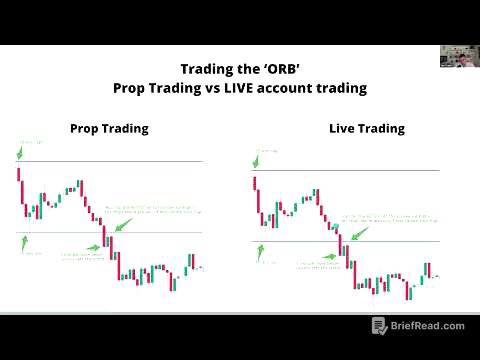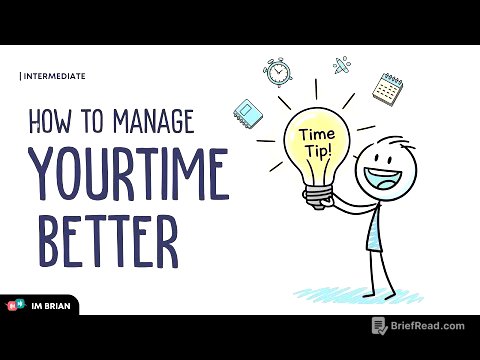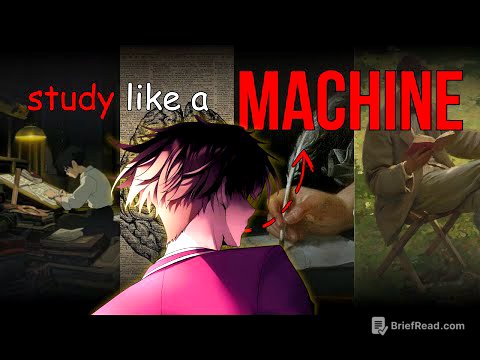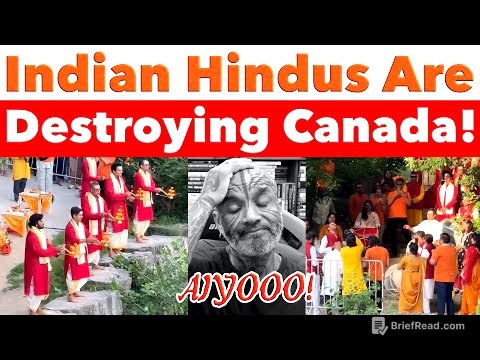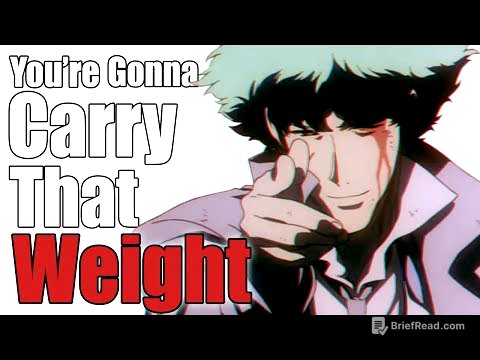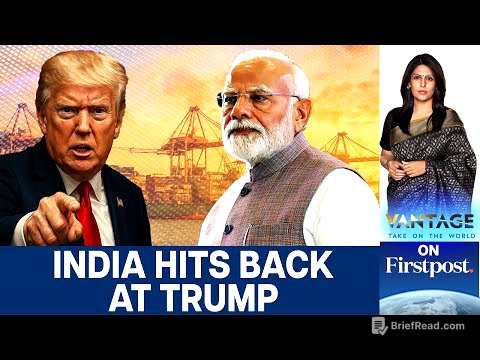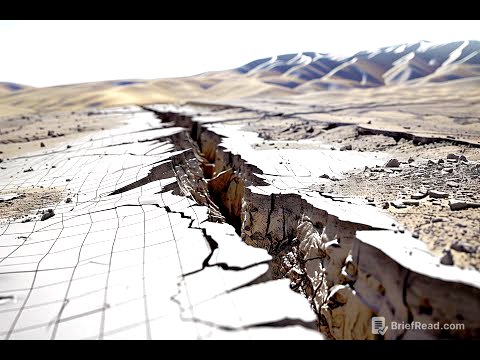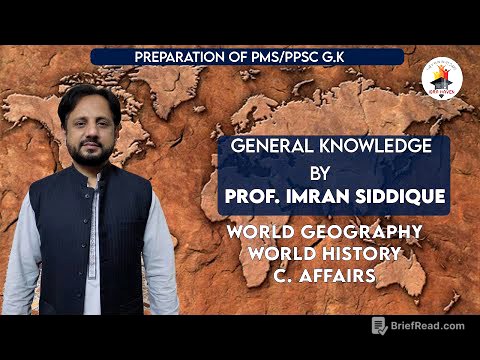TLDR;
This video explores the life and legacy of Mao Zedong, the leader of the Chinese Revolution. It examines his rise to power from a peasant background, his role in founding the People's Republic of China, and the implementation of his communist ideology. The video also discusses the devastating consequences of his policies, including the Great Leap Forward and the Cultural Revolution, which led to widespread famine, political persecution, and social chaos. Despite the immense suffering caused by his rule, Mao remains a controversial figure in China, revered by some as a national hero and criticized by others as a ruthless dictator.
- Mao Zedong's rise from peasant origins to becoming the leader of the Chinese Revolution.
- The establishment of the People's Republic of China and the implementation of communist policies.
- The devastating consequences of the Great Leap Forward and the Cultural Revolution.
- Mao's controversial legacy as both a national hero and a ruthless dictator.
Mao Zedong: The Architect of Modern China [0:00]
Mao Zedong led the Chinese Revolution, shaping the destiny of a billion people with his communist vision. Revered as the father of modern China, he is also held responsible for the deaths of millions. Mao aimed to rebuild China from war ruins, expel invaders, and revolutionize society. However, his promises of equality concealed hunger, chaos, and fear. Mao established a cult of personality, with his image on currency, his name celebrated, and his words considered absolute truth. The video explores how a peasant boy from Hunan became the most absolute ruler in Chinese history, examining the reasons for his adoration and the silence surrounding the suffering caused by his policies. Even today, his name is respected despite the immense death toll resulting from his governance. This is a story about ideology, ambition, and the desire to create a new human being, marking Mao Zedong as a figure who changed world history at a great cost.
Early Life and Rise to Power [1:02]
Born in 1893 in Shaoshan, Hunan Province, Mao Zedong was the son of a wealthy, disciplined farmer and a gentle, religious mother. From a young age, Mao was rebellious, preferring reading books on history, philosophy, and rebellion to following orders. He attended a Confucian school but rejected its teachings of blind obedience. Inspired by the Xinhai Revolution in 1911, he briefly joined the army. Later, at the Changsha teacher training school and as a library assistant at Peking University, he encountered socialism, communism, and the Russian Revolution. Influenced by Lenin and Marxism, Mao began writing, advocating for the liberation of the Chinese nation from feudalism, colonialism, and social classes, believing that peasants, not the educated, would drive this change.
Founding the Communist Party and the Long March [2:06]
In 1921, Mao Zedong co-founded the Communist Party of China (CPC). Initially small and weak, the CPC consisted of young intellectuals and urban workers. They cooperated with the Nationalist Party (KMT), led by Chiang Kai-shek, to fight warlords and colonialism. However, in 1927, Chiang Kai-shek turned against the communists, launching the "Shanghai Massacre," killing thousands. Mao escaped and established a power base in rural areas, forming a guerrilla force, controlling rural regions, establishing local governance, training troops, and educating the people. In 1934, the legendary "Long March" occurred due to pressure on the Communist Party. Mao's troops marched over 9,000 kilometers across mountains, snow, and rivers, pursued by KMT forces. Only 8,000 of the original 86,000 troops survived, solidifying the event as a legend.
The People's Republic of China [3:12]
During the Second Sino-Japanese War, Communists and Nationalists temporarily united against the Japanese invaders. After the war, the civil war resumed, resulting in a Communist victory in 1949. Chiang Kai-shek fled to Taiwan, and Mao Zedong proclaimed the People's Republic of China, not as president, but as the leader of the revolution. On October 1, 1949, Mao declared that the Chinese people had risen. The new regime redistributed land from the nobility to peasants, centralized factories under state control, reformed education, and removed the old elite. Mao aimed to create a new, equal, diligent, and obedient individual dedicated to the revolution, controlling media, schools, and culture. To ordinary people, Mao was a hero who restored land, labor, and national pride. However, uniformity, submission, and belief in the party were mandatory.
The Great Leap Forward [4:10]
In 1958, Mao Zedong initiated the "Great Leap Forward," an ambitious program to transform China from an agricultural society into a modern industrial power within a few years. Collectivization was enforced, abolishing private land ownership and transforming villages into people's communes. Small steel furnaces were built everywhere, with people believing in the power of the people's revolution to surpass Western industrial nations. However, agricultural production plummeted, but local officials, fearing repercussions, reported false successes. Consequently, the government seized excessive food supplies, leading to widespread famine. Millions were forced to work without adequate food, and dissenters were accused of being counter-revolutionaries. Between 1959 and 1961, an estimated 30 to 45 million people died of starvation, marking the deadliest non-war tragedy in human history.
The Cultural Revolution [5:27]
In 1966, Mao launched the Cultural Revolution to eliminate bourgeois and counter-revolutionary elements within the party, schools, and society. This led to mass chaos. Mao mobilized young people into Red Guards, fanatical students loyal only to him. They stormed schools, burned books, destroyed temples, and attacked teachers, scientists, and even parents. Symbols of traditional Chinese Confucianism and classical art were destroyed within weeks. Party officials were humiliated, tortured, and killed. Universities were closed, and children were sent to rural villages. The entire country became an ideological battlefield, with anyone not fully aligned considered an enemy. The economy was paralyzed, and knowledge stagnated, resulting in millions of lost futures and lives.
Death and Legacy [6:46]
The Cultural Revolution lasted for ten years, until the party gradually eased its policies after millions of victims. Mao Zedong died on September 9, 1976, at the age of 82, leaving China in a state of social and psychological devastation. During his 27 years in power, Mao transformed China into a strong and sovereign republic, but at a tremendous cost. Between 50 and 70 million people died due to famine, persecution, and political chaos. After his death, the party acknowledged his significant errors, but his name and image remain. His statue still stands, and his mausoleum is guarded in Tiananmen Square. The official stance of the Chinese Communist Party is that he was "70% right and 30% wrong." Mao is both respected and feared, hated and admired, leaving behind a country marked by deep wounds. His legacy remains a subject of debate, with some viewing him as a hero who united the country and others as a dictator who destroyed generations. Mao's story serves as a lesson about the destructive potential of unchecked power and rigid ideology.

